🎮 Rodem the Wild
2024年 12月 27日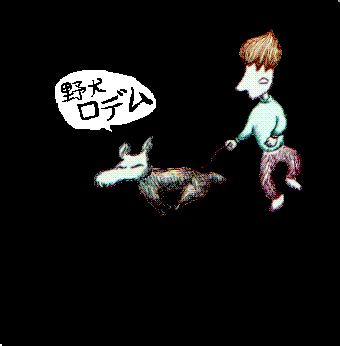
There are games you play for the puzzles, and there are games where the game itself is the puzzle. iTA-Choco Systems’ 1994 Mac stray dog survival game Rodem the Wild (Yaken Rodem) is very much the latter, a little ball of mechanics and UI just waiting for the right player to come along and understand them.
Poor Rodem is having the worst day of his life. Abandoned by his owner in Hyakujiri Park, his comfortable home life has been ripped away. All that’s left is learning to survive on his own. The player helps avoid dangerous humans, or befriend them; fight other dogs for dominance, or form little packs; scavenge for food, or starve.
But if the game itself is a puzzle, just describing the mechanics won’t really give a picture of how Rodem works: we need to learn by seeing. Let’s take a tour of a player’s first journey through the game to really get what it feels like.
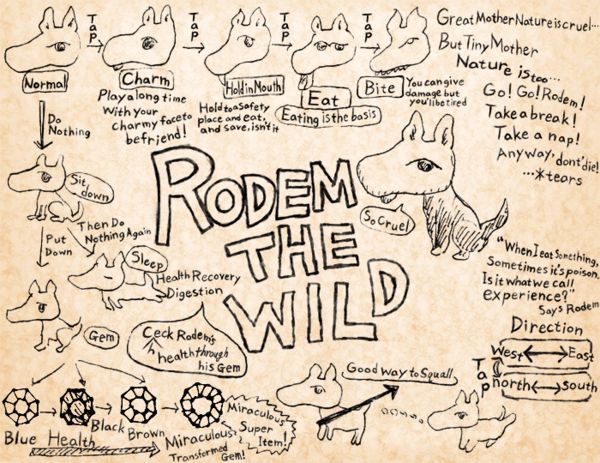
Before the player even begins playing they’ll have seen this large, fold-out manual1. It’s large enough the player is encouraged to take a long, slow look at it, appreciating its size and physical presence as much as its contents. Right from the start, the manual tells the player a lot while intentionally holding many things back. With its size, its lack of columns, its lack of “standard” organization, there’s easily five or six different places the player could start reading and none of them are really wrong. It pointedly doesn’t tell the player things like how to win the game; if they can win the game; how they can lose; what the flow of gameplay looks like; what they should be doing moment to moment. Many of the things it does say hint at possibilities more than they outright suggest them.
- The player can sleep; should they? Do they need to?
- Rodem can digest things; does he need to eat?
- Rodem can urinate on command, but what does it do?
- The player can check Rodem’s health. How does he get hurt? Does he die?
- Rodem can hold items, but what for?
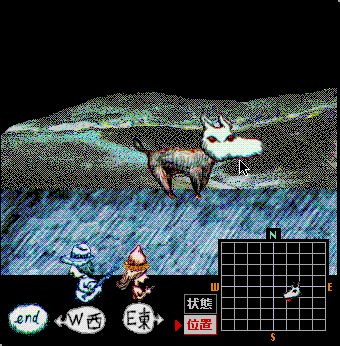
Following a short loading screen, the player is dropped into Hyakujiri Park with very little explanation. The player might think they could move Rodem with the keyboard, but the arrow keys don’t do anything. (This is before WASD, of course.) The player might think about moving the mouse to click where they want to move, except Rodem starts moving before they even click anything. Rodem, it turns out, follows the player’s cursor with great curiosity; this is in the Pac-Man 2 lineage, suggesting actions to Rodem more than precisely controlling his every move.
A new player won’t have learned how the map works yet, so there’s only two directions they’ll be likely to travel: west, or east. Let’s say our hypothetical player takes a trip to the west. They’ll soon run into a river and, when strolling across it, they’ll hear Rodem yipe and act hurt. Soon enough, even if they cross it, they’ll have their first death. RIP to Rodem, died of exhaustion after crossing a river. So, our player thinks: this is a survival game, one where Rodem dies easily, and one where rivers are deadly.
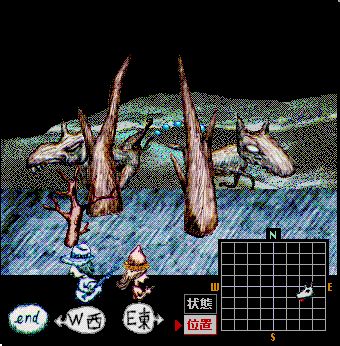
On their next journey, the player tries a trip to the east. Here, strategically positioned, is the first NPC wild dog most players are likely to run into - and the player’s first introduction to dog combat. A new player won’t have learned to run away at first touch yet, so most players will either die then and there, or limp away to their death on the next screen. RIP Rodem again. On pondering their certain death on either side, a player might remember the manual’s “charmy face”. Clicking Rodem’s face to switch his expression, they continue east to find the other dog willing to at least tolerate his presence. Lesson learned: Rodem’s face might not control his environment, but it influences it, and choosing the right attitude can help Rodem survive a deadly trap.
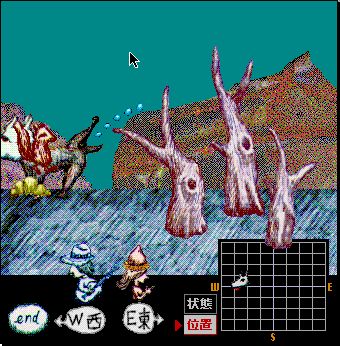
Eventually, if the player risks hanging around the other dogs long enough, they might notice one of the other dogs urinating. If they happen to remember what the manual said about urinating, they might realize that they can do it too. Thinking about what real dogs do when urinating somewhere, the player might clue in to what’s happening: the dogs are marking their territory. The dog to the east of the starting screen is so aggressive because Rodem stumbles into the territory he’s marked, but may be passive should they meet on neutral territory. And, knowing Rodem can urinate too, players may realize: they can mark their own territory too, staking out spaces that other dogs will, at least temporarily, avoid.
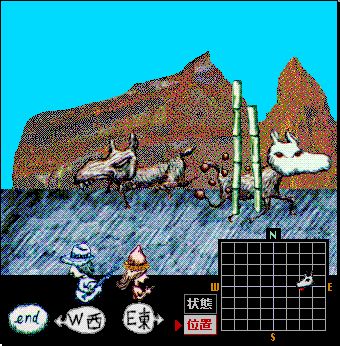
So far our imaginary player has just been moving left and right, but the map in the corner of the screen shows a grid with north and west directions too. The player might have enjoyed the nice avatars of east and west, but not thought too hard about what they mean. But maybe now, out of curiosity, they click - and suddenly east and west become north and south, and the background shifts under them. The game is still 2D, it still scrolls on a 2D plane, but the player has suddenly unlocked the entire rest of the map just by learning how it works.
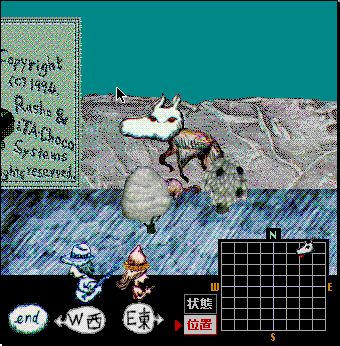
Other mechanics slowly click into place like the pieces of the puzzle. Rodem can survive many injuries, or a trip across the river, so long as he sleeps to recover his health. Eating food is crucial to stay alive, but Rodem only digests when sleeping. Even when the manual hints at certain mechanics, players won’t truly understand them until they explore them in context. This slow feeling out of the space of the world, of finding individual mechanics and then placing them into context with the other mechanics they’ve discovered, is the key element of the entire game. It lets the player build out confidence in their understanding in the space at exactly the same pace they build out Rodem’s ability to survive in this weird and uncomfortable world.
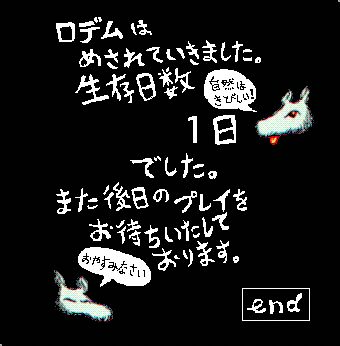
Of course, no game lasts forever, and neither does Rodem’s life. This is a survival game, and the game runs out someday. When the player dies, the game ends with little angels carrying Rodem off to heaven and a tally of how many days they survived. But would they like to try again? The player might learn something new, and might survive another day longer. And why not? That’s life, isn’t it?

